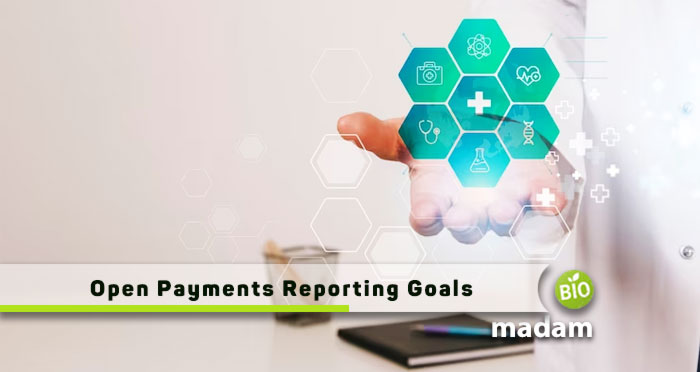The Open Payments Program, mandated by CMS, promotes transparency by revealing financial interactions between life sciences companies and healthcare providers.
It mandates disclosing payments for research, consulting, speaking engagements, travel, meals, and gifts. By making this information publicly accessible, the program empowers patients, healthcare professionals, and the public to make informed healthcare choices.
In the life sciences industry, maintaining transparency and complying with regulatory requirements is crucial for ensuring ethical business practices and fostering stakeholder trust.
Open payment data reporting plays a critical role in achieving these objectives. With a failure to comply with the Sunshine Act’s reporting requirements resulting in regulatory penalties, it becomes essential for life sciences companies to ensure timely submission of transparency reports to the CMS.
For this reason, many compliance teams prefer leveraging data-driven transparency reporting solutions to streamline open payment reporting, ensure efficient identification and mitigation of risks, and timely submit reports to the CMS.
Let’s further understand transparency reporting and explore how organizations can achieve their open payment reporting goals.
Understanding Open Payments Reporting Requirements
Organizations that submit aggregate spending reports to the CMS are known as reporting entities in compliance terminology. These reporting entities include legal or organizational units involved in developing, manufacturing, marketing, or distributing life sciences products. These entities may be parent companies, subsidiaries, or joint ventures.
The scope of reporting entities is determined by several factors, including:
- The Structure of the Organization: The legal structure and the relationships between its various entities.
- The Nature of the Activities: The type of life sciences products the organization develops, manufactures, markets, and distributes.
- The Regulatory Requirements: The applicable laws and regulations that govern the organization’s activities. These laws and regulations drive changes in the
The types of payments or TOVs that life sciences companies must report can be broadly categorized into the following:
- Donations and Grants: Financial contributions for education, research, or charity.
- Grants and Benefits in Kind: Non-monetary items like equipment, supplies, or services.
- Sponsorship of Meeting Attendance: Payments for HCPs to attend conferences or workshops.
- Fees Paid to Healthcare Professionals: Payments for consulting, speaking, or advisory board participation.
- Contributions to the Cost of Meetings: Partial funding for HCP-attended meetings, including registration, accommodation, and travel.
- Other TOVs: Honoraria, gifts, meals, entertainment, and other non-monetary benefits.
Reporting Timelines
The Open Payments program operates annually, with reporting entities required to collect data for the entire calendar year. The reporting timeline is as follows:
- Data Collection Period: January 1 – December 31
- Data Submission Deadline: March 31 of the following year
- Pre-Publication Review and Dispute Period: April 1 – May 15 of the following year
- Data Publication Date: On or by June 30 of the following year
Data Submission Process
Life sciences companies can submit Open Payments data using two methods:
- Manual Data Entry: This method involves manually entering each payment or transfer of value into the Open Payments system. While this method is straightforward, it can be time-consuming and error-prone for companies with large volumes of data.
- Bulk Data Entry: This method allows companies to upload CSV files containing their payment or transfer of value data. This method is more efficient for companies with large datasets but requires careful data formatting to ensure accurate submission.

The Key Challenges in Open Payments Reporting
The first challenge lies in identifying the vast array of data sources that hold compliance-critical information. After collecting the data, it must be harmonized and standardized to ensure consistency and compatibility for compliance purposes. Data management is an ongoing process that requires continuous monitoring, updating, and validation.
However, manual data entry and manipulation are susceptible to human error.
Common Errors in Manual Data Processing
- Incorrect Data Entry: Simple typos or misinterpretations of numerical values can lead to significant financial discrepancies.
- Data Duplication or Omission: Duplicate records or missing entries can disrupt financial reporting and decision-making.
- Inconsistent Data Formats: Inconsistencies in data formats and units can hinder data analysis and reconciliation.
Mitigating Errors through Automation
Life sciences companies increasingly embrace automation to minimize human error and ensure compliance. Automated systems streamline data management, enforce data integrity checks, and ensure adherence to regulatory standards.
Regulatory requirements are constantly evolving, and scientific advancements bring about new considerations.
Life sciences submissions involve a vast amount of complex data that must be meticulously organized, analyzed, and presented compliantly. This requires a deep understanding of regulatory guidelines, industry standards, and scientific data nuances.
Strategies for Effective Open Payments Reporting
To fully harness the power of their data, life sciences companies must adopt a data-driven aggregate spend reporting system specifically designed to handle these intricacies.
Effective DMS implementation offers a multitude of benefits, including:
- Centralized Data Storage: A centralized repository consolidates data from disparate sources, eliminating silos and facilitating seamless access.
- Improved Data Quality: DMS tools ensure data integrity and consistency, minimizing errors and enhancing decision-making.
- Enhanced Collaboration: Shared access to organized data fosters collaboration among researchers and departments.
- Compliance Adherence: DMS facilitates compliance with stringent regulatory requirements, safeguarding sensitive information.
By automating data collection, organizations can streamline processes, eliminating manual errors and saving valuable time. These tools seamlessly extract data from various sources, providing a centralized repository for easy access and analysis.
Automated validation, the next step, meticulously scrutinizes the collected data, ensuring adherence to regulatory standards and internal guidelines. This proactive approach identifies and rectifies anomalies early, preventing costly compliance breaches and regulatory interventions.
Collaboration between compliance teams, finance departments, and other stakeholders is paramount to streamlining reporting processes, leveraging cross-functional expertise, and ensuring timely adherence to regulations.
By promoting open communication, life sciences companies can reap significant benefits from this collaborative approach:
- Enhanced Data Integrity: Centralized data management ensures data accuracy and eliminates inconsistencies.
- Streamlined Reporting: Automated report generation saves time and effort.
- Real-time Risk Mitigation: Continuous visibility enables proactive risk identification and mitigation.
- Transparency and Accountability: Stakeholders have access to relevant compliance information.
Navigating Dispute Resolution Processes in Open Payments Reporting
Disputes between life sciences companies and covered recipients regarding reported payments can arise due to various reasons, such as discrepancies in payment amounts, payment types, or recipient designations. To effectively resolve these disputes, the Centres for Medicare & Medicaid Services (CMS) has established a multi-step process:
- Initiation: The covered recipient submits dispute notification to the life sciences company.
- Response: Life sciences company acknowledges or refutes discrepancy within 30 days.
- Mediation: Either party can request CMS-mediated discussions to reach a solution.
- Arbitration: If mediation fails, either party can initiate binding arbitration.
Detailed records and evidence serve as the bedrock of effective defense, providing a clear and objective account of interactions, agreements, and decisions.
Maintaining meticulous documentation allows for a thorough investigation of claims, enabling a fair and impartial resolution process.
Effective communication and collaboration with the Centers for Medicare & Medicaid Services (CMS) are crucial for resolving discrepancies or inaccuracies in Open Payments reporting.
Life sciences companies should adhere to specific procedures and communication protocols established by CMS to ensure timely and accurate resolution of any issues.
Key Steps for Effective CMS Collaboration
- Report Discrepancies Promptly: Inform CMS of discrepancies using designated channels and established procedures.
- Provide Supporting Documentation: Attach relevant documents, such as invoices or receipts, to substantiate discrepancies.
- Maintain Open Communication: Respond to CMS inquiries promptly and provide additional information as requested.
- Adhere to CMS Timelines: Proactively address CMS requests to avoid delays.
- Document Resolution Process: Keep a detailed record of interactions with CMS regarding discrepancy resolution.
Tailoring compliance strategies to life sciences companies’ specific risks and regulatory environment is crucial.
This involves identifying potential pitfalls, conducting thorough due diligence, and implementing robust internal controls.

Proactive compliance measures can take various forms, including:
- Establish clear policies and procedures that outline reporting requirements and responsibilities.
- Providing comprehensive training to employees on compliance regulations and reporting practices.
- Implementing robust data management systems ensures reported information’s accuracy and integrity.
- Conducting regular audits to identify and address compliance gaps promptly.
Companies can enhance transparency, ensure data integrity, and proactively address potential risks by systematically evaluating and optimizing reporting processes.
Continuous improvement initiatives can involve:
- Set clear performance metrics for tracking progress and identifying improvement areas.
- Encourage stakeholder feedback to gain insights into reporting challenges and opportunities.
- Implement data governance practices to ensure data accuracy and consistency.
- Leverage technology solutions to automate tasks, streamline workflows, and enhance reporting capabilities.
Life sciences companies can gain deeper insights into their reporting data, identifying patterns, trends, and anomalies by leveraging data analytics that may indicate potential compliance risks.
AI algorithms can further automate data analysis, expediting identifying and resolving discrepancies and ensuring the integrity of reported information.
Conclusion
In conclusion, the Open Payments Program, mandated by CMS, is vital for transparency in the life sciences industry.
Reporting requirements, encompassing diverse payments and transfers of value, play a pivotal role in ethical business practices.
Compliance is not just a legal obligation; it’s a commitment to transparency and trust. Challenges in reporting, from manual errors to data complexity, are effectively addressed through automation.
However, a transparent reporting solution combined with collaborative approaches with different organization departments, life sciences companies, and compliance professionals can streamline reporting processes.
Dispute resolution, guided by CMS protocols, emphasizes clear communication and meticulous documentation. This can be further augmented by identifying the risks in CMS open payments data before the government does.
Tailoring compliance strategies and leveraging technology empowers life sciences companies to navigate aggregate spend reporting complexities, ensuring transparency and fostering stakeholder trust.

Hi, they call me Jenna, and I am also known for achieving a gold medal during my Ph.D. in science life. I always had a dream to educate people through my utmost writing hobby. So, I chose this blogging path, and Biomadam gave me this opportunity to present for them. I now stand to entertain you. Continue reading my articles & discuss if you’ve any confusion through the comment section below.

